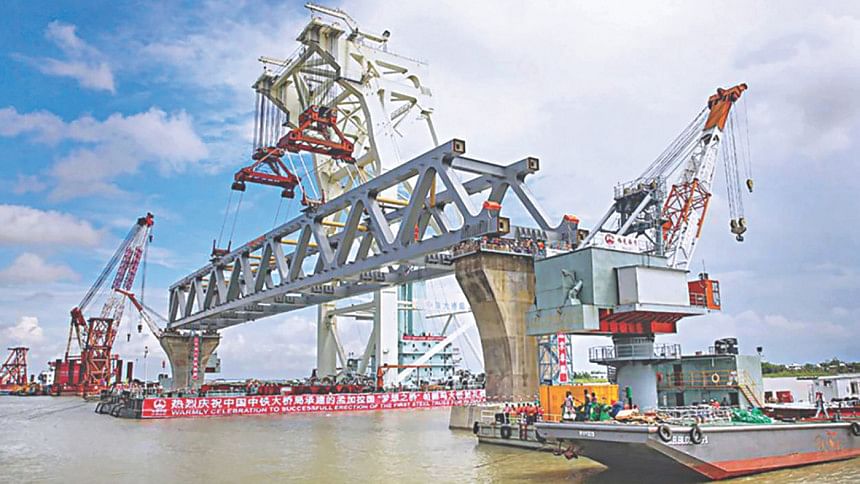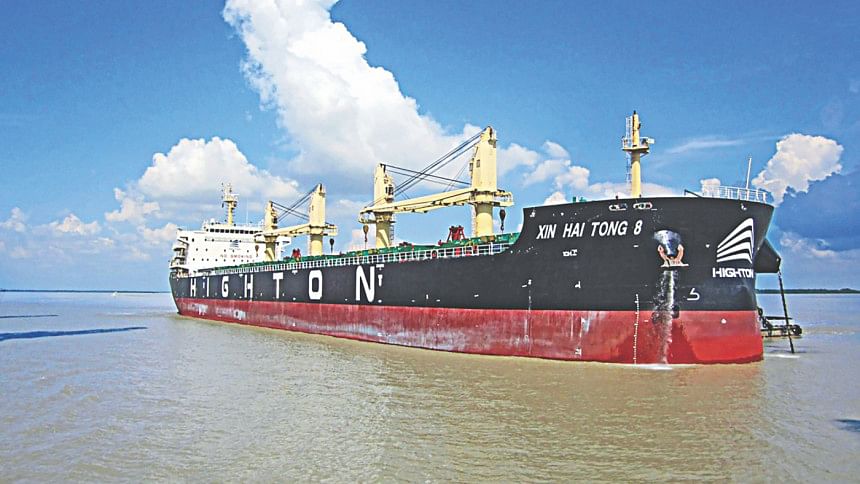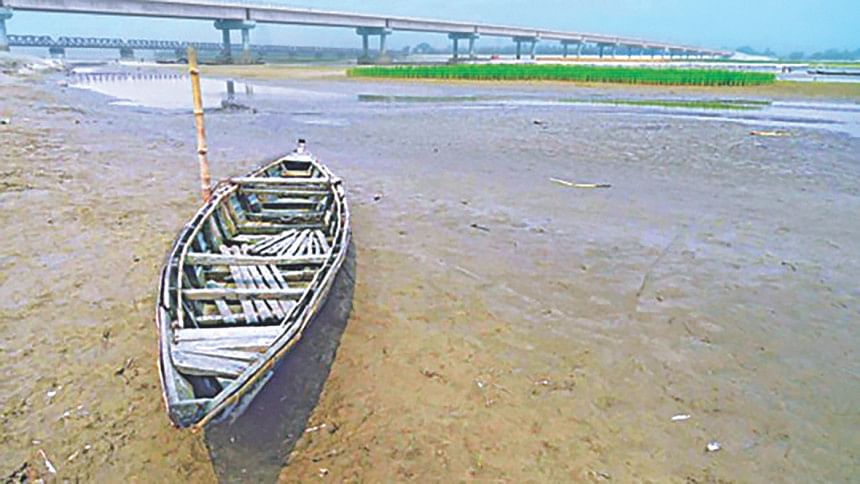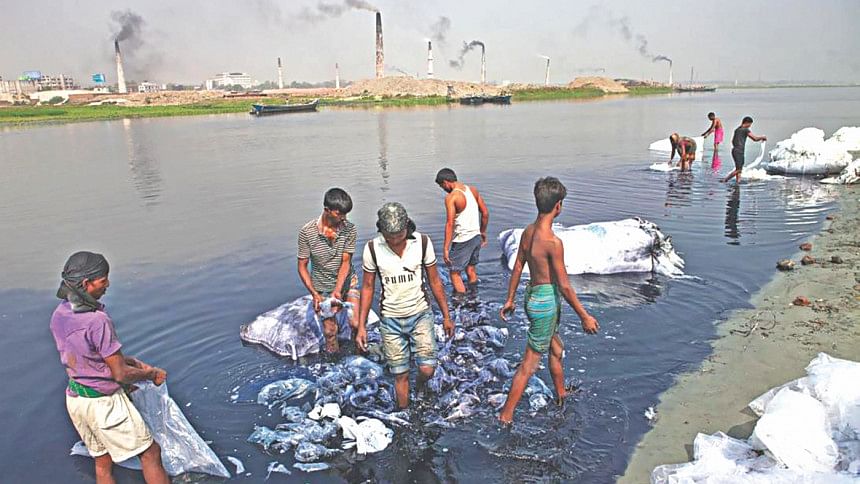Protecting our rivers and waterbodies for a sustainable future

Bangladesh is truly a riverine as well as a maritime country, which is situated at the largest delta containing the finest mangrove and longest continuous sea beach in the world. Most of the rivers in Bangladesh are either tributaries or distributaries of the Ganges, or the Brahmaputra, or the Meghna River. Both the density of population and density of rivers/rivulets per square km are among the highest in the world if we consider all listed rivers and streams. Our ancestors were immensely dependent on the resources of the rivers and water bodies of the country. We still depend on the rivers for our living and communication. The sweet water fish in our rivers and water bodies are among the best in the world, which have kept our lives moving as the bulk of the protein comes from these marine creatures. To feed our huge population and minimise the cost of living we need to nurture the rivers and water bodies.
As a citizen of a littoral state, we feel proud to have the advantage of getting invaluable benefits from hundreds of rivers and innumerable water bodies. Rivers are also an integral part of the major communication links, which is not fully exploited though, from seaports to upstream inside the mainland. To use the rivers and water bodies sustainably we need to protect these invaluable natural gifts from all sorts of wrongdoings. People damage rivers knowingly or unknowingly to obtain short term benefits, which should not happen. Existing laws are at times not very effective because the intentions of stakeholders and their cohorts are often misguided by corrupt practices. With the advancement of modern science and technology, there are different means available for the surveillance of natural resources. With the digital revolution in Bangladesh, we need to develop and make the best use of newly available technologies to monitor rivers, quality of river water flowing from outside and within the country, and water bodies, continuously so that none can harm these valuable assets and we keep them safe for future generations' sustainable use.
We still do not have a comprehensive river protection law in Bangladesh, and the country is not a signatory of international River Law Conventions either. The United Nations drafted the document on the Law of Non-Navigational Uses of International Watercourses, commonly referred to as the UN Watercourses Convention in 1997, to help conserve and manage water resources for present and future generations. From the time of its drafting, the Convention took 17 years to enter into force on August 17, 2014. The treaty has been ratified by just 36 states or so. The majority of countries, especially the key ones, remain outside its scope. The convention, however, is regarded as an important step in establishing international law governing water. Article 7 of the document titled, "Obligation not to cause significant harm," requires that member states "in utilising an international watercourse in their territories take all appropriate measures to prevent the causing of significant harm to other watercourse states" and compensate sharing states for any such harm. This part of the law is particularly important for a geographically disadvantaged country like Bangladesh to get a share of international river waters.

In Bangladesh, we already have a national water policy, but we need proper law to streamline the use of water resources and ensure their protection from pollution. The law needs to cater to provisions to safeguard rivers from pollution, illegal occupation, preventing industrial wastes and maintenance management and coordination process among the different stakeholders of rivers. Law may also include provisions for maintaining water quality. A question may arise who would check the quality of water coming across the border? This matter needs to be addressed by the concerned ministry.
We have 54 transboundary rivers with India and three with Myanmar. Among these, only the Ganges water-sharing treaty has been signed with India. Teesta water sharing is still pending, and the rest are under process. The whole country is waiting to see what comes next. History says Joint River Commission officials have not been successful in most of the cases over several decades. Many experts and civil society members opine to resolve these through international laws as has been done in case of delimitation of maritime boundaries between Bangladesh and neighbouring countries.
The source of surface water in Bangladesh is the rainfall the country records and the stream flow coming in from outside the country. The surface water resource of this country is very much essential for its people and animals, aquatic flora and fauna, navigation, agriculture, etc. It is also necessary for keeping alive the distributaries in the delta, and maintaining the brackish water ecosystem along the sea, on an annual cycle. Unfortunately, the knowledge of preserving surface water for use is missing in our society, which is very common in developed countries. In Malaysia, approval of a plan for building construction is not given in towns unless they have reservoir tanks underground for rainwater collection. In Bangladesh, we still are waiting to see similar instructions from the concerned authority. If we had such orders, probably city centres would have been saved from water logging with little rainfall. Surface water storage is important not only in cities but also in rural areas. The rivers and wetlands in Bangladesh are the major reservoirs for the storage of surface water. The wetlands, called the "beels" and "haors" are depressions caused by shifting of river courses, tectonic activities, etc. over ages. Many rivers have flood plains over the countryside and those go underwater during the monsoon and the floods.
Among the closed water bodies, the "baors" lay mostly in south-western Bangladesh. These are horseshoe lakes formed by the dead courses of rivers. However, the traditional surface water storage mechanisms all over the country are the ponds. Local Government and Rural Engineering Department (LGED) has schemes to create and maintain such water bodies. All these water areas must be standardised, modelled and monitored area wise through digital mapping and monitoring systems as is done in the Netherland or some other countries who have achieved excellence in water management.
There are different stakeholders for the management of rivers and water bodies. The organisations which are major stakeholders are the Water Development Board (WDB), Bangladesh Inland Water Transport Authority (BIWTA), Department of Environment, Water Resources Planning Organization, LGED, Divisional and District Commissioners, Upazila Nirbahi Officer, and respective ministries. Every organisation needs to work out their respective capacities and capabilities, but central coordination is vital for implementing the ultimate national policies. In the case of river and water body management, duplication of initiatives or efforts would cause unnecessary waste of funding. The Ganges Barrage project is another idea being floated as has been discussed on several occasions in seminars and workshops. The barrage would store excess water for use during the dry season. This would require detailed planning, time and huge funding. Navigation through the Sundarbans is another issue discussed at different forums. Any kind of oil spill, as had happened in the past, is dangerous. We need to have our safety mechanism in place. Ecology is important not only for Bangladesh but also for others. There is a special arrangement to look after the activities of the routes and meet navigational requirements like dredging, signals, pilot station and other formal arrangements. Ghasiakhali was the main channel of communication between Bangladesh and India. The Sundarbans channel was used due to the temporary disruption of that channel. Capital dredging of Ghasiakhali Channel by Bangladesh Inland Water Transport Authority is in operation and the Sundarbans channel is almost closed, which has been a good example of effective channel dredging.
The National River Conservation Commission (NRCC)—by Act No, XXIX of 2013; S.R.O. No. 28-Law/2017—, was established on July 22, 2013. The objectives of the Commission were prevention of illegal occupation of rivers, pollution of water and environment, pollution of rivers caused by industrial factories, illegal constructions and various irregularities and ensuring multidimensional use of rivers for socio-economic development. Their activities also include the restoration of the normal flow of rivers, proper maintenance thereof and making them navigable. Ideally, such guidelines would have been good enough to maintain the rivers if the concerned teams were given enough authority and instruments. A short visit at any river port in Bangladesh and one can see how non-compliance of laws has visible symptoms of deleterious effects in the environment. Rivers have become a dumping ground for all kinds of polythene, industrial wastes containing poisonous chemicals and related items which are harmful to fish and humans. Although in 2002, Bangladesh became the first country in the world to ban thinner plastic bags, after 17 years, it appears that the ban is not truly in force.

This culture is dangerous for the future as microplastics are continuously being absorbed by different marine species, which are ultimately consumed by humans and this can cause fatal diseases.
Moreover, industrial wastes are regularly discharged into water bodies which are killing our rivers. Rampant use of riverbanks has distorted the quality of rivers.
Occasionally BIWTA undertakes drives (vide Port Act 1908), but the leaders at local areas do not always cooperate. As a result, the repetition of violations continues once the monitoring agencies leave. There is purported to be some sort of misunderstanding about the sharing of responsibilities between BIWTA and the NRCC, which must be resolved at the earliest making national interest the top priority.
Currently, river ports are not maintained with any standard which may attract tourists coming from outside the country. There are 32 river ports in Bangladesh, and the major ports are always congested and most of these have no standard sanitary facilities, no waiting rooms, no ticketing for vessels in advance at the jetty for travellers. There are no proper landing areas and pontoons which are user-friendly as the vessels come to the pontoon heading bows (nose). We need to maintain river ports efficiently to make the rivers more attractive. Physically challenged personnel find it difficult to board the vessels. If the ports are maintained well with all modern amenities and cleanliness and digital informatics as part of the government's drive to make things digital, rivers would be able to attract more tourists and this would contribute to the overall development of the river-based socio-economy of the country.
A Korean case on river/water sharing is brought here, which may give new lessons to the world. The Imjin River (site of two major battles) or (Rimjin River in North Korea) is the seventh largest river in Korea. It flows from north to south, crossing the Demilitarised Zone and joining the Han River downstream of Seoul, near the Yellow Sea. Recently the two Koreans, despite having prolonged strained relations with the flexing of muscle, have agreed to carry out joint surveys with high-level civil-military experts and scientists/surveyors for equitable sharing of resources. Once the survey is complete, the two sides plan to prove navigational information (charts) to ensure free travel by civilian vessels. Joint usage of properties would produce a number of different effects, as they feel the common areas are suitable for the pursuit of multiple projects including aggregate extraction, tourism/recreation, and ecological preservation. These are good lessons for people of our areas who have been at the back foot to have the best use of natural resources.
A recent historic ruling from the High Court to give legal rights to all the rivers in Bangladesh has been remarkable. The High Court has accorded the Turag river the status of "legal person" to save it from encroachment and said that the status would be applicable for all the rivers across the country. Interventions of the High Court on law enforcing matters for river conservation definitely will have a positive impact. We feel a stronger law and their implementation are urgent to safeguard our valuable natural resources.

Development of human resources in general and experts and skilled human resources in particular arguably are the most important areas where we lack the most. We need a master plan to develop the right kind of professionals on water management. We need to educate students on the potential of our natural resources, and we need to nurture experts on rivers, dredgers, water and river management. Concerned universities and institutions are producing graduates; but are the graduates ready to work on our fields and are the stakeholders ready to accept them? We need to make an assessment of these areas and fundamental research with appropriate funding should be conducted. Without real research with dedicated nationals it is difficult to draw effective policies and rules.
Rivers are a part and parcel of our lives and we need to look after rivers' health and hygiene. To do that we have to follow the existing instructions and set new applicable laws and abide by those sincerely. International conventions adopted by successful leading nations should be considered for adoption. Quality of water in water bodies, rivers and rivulets at sensitive spots should be monitored through modern gadgets and digital technology so that harmful objects do not pollute our water. Appropriate legal measures should be taken against the violators of rules. We need to educate our people at all levels to safeguard our national water bodies and endeavours be made to develop our own experts including scientists who would be responsible for managing and protecting our rivers and water bodies for a sustainable future.
Rear Admiral ASM Abdul Baten (Rtd) is first Vice-Chancellor, Bangabandhu Sheikh Mujibur Rahman Maritime University, Bangladesh.

 For all latest news, follow The Daily Star's Google News channel.
For all latest news, follow The Daily Star's Google News channel. 



Comments